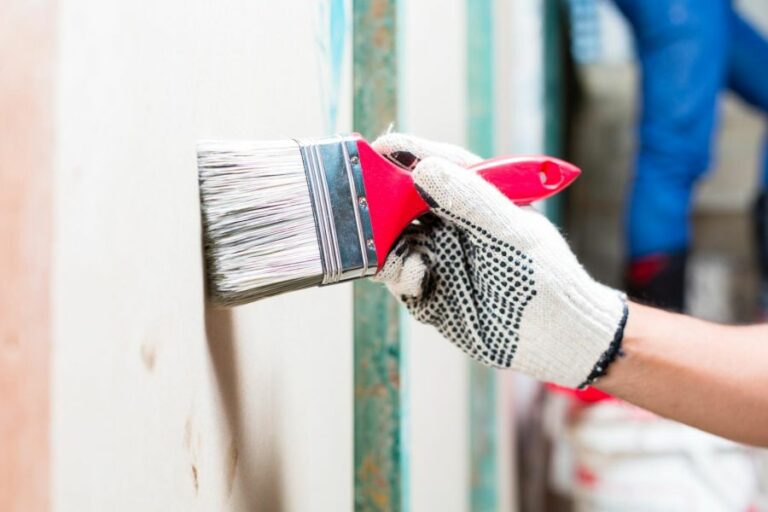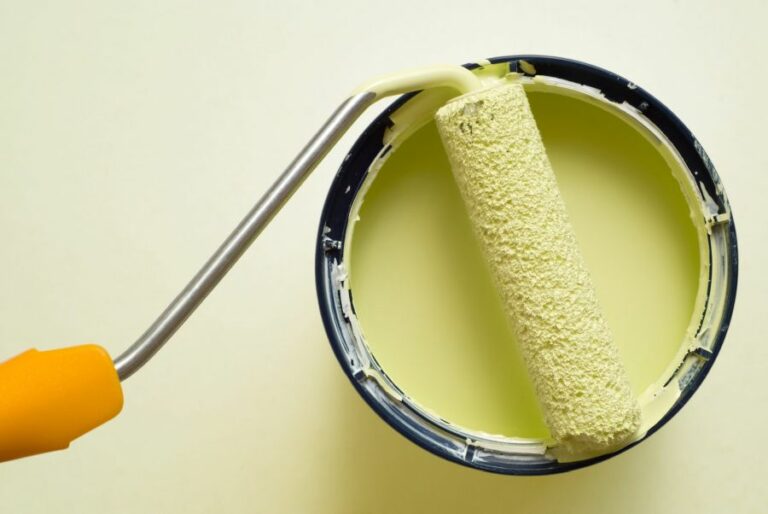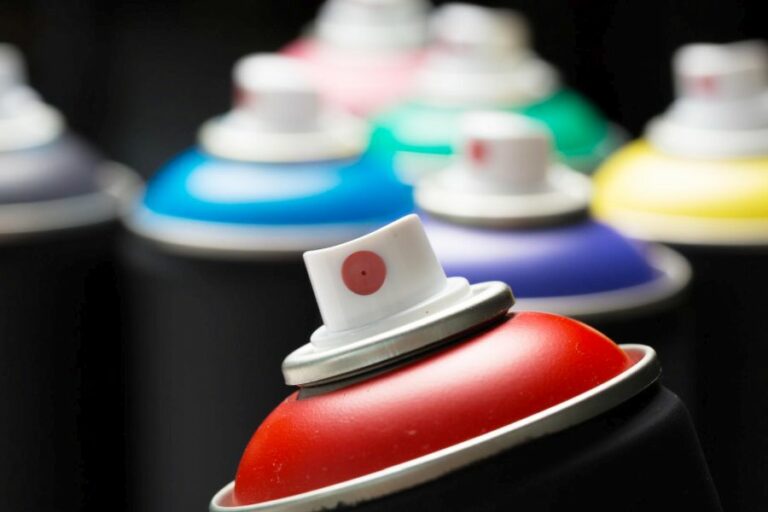Spray Paint For Plastic Outdoor Furniture, 25 Things You Should Know
Looking for an easy yet effective way to rejuvenate worn-out plastic outdoor furniture? Look no further! This detailed guide, ‘Spray Paint for Plastic Outdoor Furniture,’ is exactly what you need. Discover the best spray paint options and step-by-step instructions to quickly transform your patio chairs and tables.
Spray paint for plastic outdoor furniture:
Renovating plastic outdoor furniture requires choosing spray paints specifically formulated for plastic surfaces with excellent adhesion, UV resistance, weather resistance, and fast drying time. Brands like Rust-Oleum, Krylon, Montana, and Valspar offer high-quality options. Before painting, clean and optionally sand the surface. Apply 2-3 thin coats of paint, allowing each coat to dry as instructed. Maintain the painted furniture by regular cleaning and protecting it from harsh weather and extreme conditions. This ensures professional, long-lasting results and enhances the overall beauty of your outdoor space.

Transform your plastic outdoor furniture with ease using spray paint designed specifically for plastic surfaces. Follow our expert tips and a step-by-step guide to ensure a flawless finish, long-lasting durability, and weather resistance. Unleash your creativity and make your furniture look new!
Contents
- 1 Professional Spray Paint for Plastic Outdoor Furniture
- 2 What Type of Paint is Suitable for Plastic Outdoor Furniture?
- 3 Is it Possible to Apply Spray Paint on Plastic Patio Furniture?
- 4 Is There a Specific Type of Spray Paint Suitable for Plastic Chairs?
- 5 Is It Possible to Apply Spray Paint on a Plastic Outdoor Table?
Professional Spray Paint for Plastic Outdoor Furniture
Renovating your outdoor space can be both enchanting and exhausting, specifically when it involves giving your plastic outdoor furniture a fresh new coat of paint.
Over the years, this furniture tends to lose its glimmer and succumb to the impact of weather, leading to a dull and weary look. Worry no more!
• Finding the Perfect Spray Paint for Plastic Outdoor Furniture
Spray paints formulated specifically for plastic surfaces are the go-to choice while revamping plastic outdoor furniture. These paints are designed to adhere to the plastic substrates properly, leaving a smooth and even finish.
– Choose the Right Formula
There are a few key factors to consider when choosing spray paint specifically designed for plastic outdoor furniture:
- Adhesion: Pick a spray paint that promises excellent adhesion to plastic surfaces without a primer. This will simplify the painting process and save time.
- UV Resistance: To ensure long-lasting color, opt for a spray paint that offers UV resistance, protecting the colors from fading under direct sunlight.
- Weather Resistance: Choose a spray paint with built-in weather resistance properties to shield the furniture from damage caused by harsh weather conditions.
- Fast Drying Time: A fast-drying formula is preferred, as it allows you to re-coat or use the furniture quickly after the painting process.
– Popular Brands for Plastic Outdoor Furniture Spray Paint
Several reputable brands offer spray paint suitable for plastic outdoor furniture, promising high-quality results. Some of these noteworthy brands include:
- Rust-Oleum
- Krylon
- Montana
- Valspar
• Preparing the Plastic Outdoor Furniture for Painting
– Clean the Surface
Before applying the spray paint, ensure that your outdoor furniture is clean and free of dust, dirt, and grime. Use a mild detergent solution, a sponge or cloth, and water to clean the surface. Scrub the surface lightly and rinse thoroughly with water. Allow the furniture to dry completely before proceeding to the next step.
– Sanding the Surface (Optional)
For a smoother finish, you can lightly sand the plastic furniture using fine-grit sandpaper (preferably around 220 grit). This step is optional, but sanding the surface will promote better spray paint adhesion.
After sanding, make sure to remove any residue or dust by wiping down the furniture with a clean cloth.
• Applying the Spray Paint
– Read the Instructions
Before you begin the process, it is crucial to read the instructions provided by the paint manufacturer for their specific product. This ensures that you adhere to their recommendations and achieve the best possible results.
– Set Up a Painting Area
Choose a well-ventilated area, preferably outdoors or in a garage, to paint your furniture. Lay down a drop cloth or plastic sheet to protect the ground from paint.
– Practice Your Spray Technique
Spray painting can be tricky if you have never done it before. To avoid uneven coverage or dripping, practice your spray technique on a piece of cardboard or scrap plastic material. Use a steady and consistent sweeping motion, maintaining a distance of about 12 inches from the surface.
– Apply the Paint
Shake the spray paint can according to the manufacturer’s instructions. Then, using the practiced technique, apply thin and even coats of paint on the plastic furniture. Hold the can upright and maintain a consistent distance from the surface.
Allow each coat to dry as instructed before applying additional coats. Most plastic outdoor furniture will require 2-3 coats.
– Stay Patient and Let it Dry
Patience is key when it comes to drying the painted furniture. It is essential to allow the recommended drying time as specified by the manufacturer before using your newly painted furniture. This will prevent any damage or smudging of the paint.
• Tips for Maintaining Your Newly Painted Plastic Outdoor Furniture
- Wipe down the furniture with a damp cloth regularly to keep it clean and free of dust.
- Avoid placing extremely hot or heavy items directly onto the painted surface.
- Store the furniture away during harsh weather or cover it with a protective furniture cover.
• Final Thoughts
Spray painting plastic outdoor furniture is an effective and efficient way to refresh its appearance and enhance the overall beauty of your outdoor space.
You can achieve professional, long-lasting results by selecting suitable spray paint, preparing the furniture, and following the recommended painting practices.
What Type of Paint is Suitable for Plastic Outdoor Furniture?
Plastic outdoor furniture is a popular choice for many homeowners and businesses due to its lightweight and durable properties. It has the ability to withstand changing weather conditions and is low maintenance.
However, the original color may fade over time, and you may feel the need to revitalize the furniture by painting it.
• Primer: The Essential First Step
Before choosing the appropriate paint for your plastic outdoor furniture, it is essential to understand the importance of using a primer. A primer creates a proper surface for the paint to adhere to and ensures the paint job’s longevity.
It is highly recommended to use a primer specifically designed for plastic surfaces. An example of a suitable primer is Rust-Oleum Specialty Plastic Primer, which is formulated to bond tightly to plastic surfaces.
– How to Apply Primer
- Clean the furniture: Thoroughly clean the plastic outdoor furniture using water and mild soap. Ensure it is free of dirt, grease, and other contaminants, and allow it to dry completely.
- Sand the surface: Lightly sand the surface with 400-grit sandpaper to create an even surface for the primer to stick to.
- Apply the primer: Hold the spray primer 10-12 inches away from the surface and apply evenly, using long sweeping motions. Allow the primer to dry according to the manufacturer’s instructions.
- Inspect the surface: Ensure that the primer has completely covered the surface. Apply another coat if necessary.
• Types of Paint for Plastic Outdoor Furniture
There are several options available when it comes to selecting the right paint for your plastic outdoor furniture. Understanding their unique properties and benefits will help you make an informed choice. Here are some popular options:
– Acrylic Paint
Acrylic paint is a versatile and widely-used paint option for various surfaces, including plastic. It dries quickly, is water-resistant, and comes in a wide variety of colors. Choosing acrylic paint specifically designed for plastic is essential for the best results.
Recommended brand: Krylon Fusion for Plastic
– Enamel Paint
Enamel paint is another excellent choice for painting plastic outdoor furniture. It is known for its durability, weather resistance, and vibrant colors. Be sure to choose an enamel paint that is specific to plastic.
Recommended brand: Rust-Oleum Painter’s Touch Ultra Cover
– Specialty Plastic Paint
As the name suggests, specialty plastic paints are formulated explicitly for plastic surfaces. They bond well to the plastic, providing a durable and long-lasting finish. These paints usually require no priming, making the job more straightforward.
Recommended brand: Valspar Plastic Outdoor Furniture Paint
• How to Apply Paint
- Choose the right paint: Based on your preferences and desired finish, select an appropriate paint for your plastic outdoor furniture.
- Test the paint: Always test the paint on a small, inconspicuous area of the furniture to ensure compatibility and desired results.
- Apply the paint: Hold the spray paint 10-12 inches away from the surface, using long sweeping motions for even coverage. Apply multiple thin coats, allowing each coat to dry according to the manufacturer’s instructions.
- Drying time: Allow the paint to dry and cure for at least 24-48 hours before using or exposing the furniture to the outdoors.
• Tips for a Successful Paint Job
- Always work in a well-ventilated area, preferably outdoors or in a garage with open doors.
- Use painter’s tape and plastic sheeting to protect surrounding areas from overspray.
- To prevent drips and uneven coverage, apply multiple thin coats of paint rather than one heavy coat.
- Follow the recommended drying time between coats, as the paint manufacturer specifies.
- Consider applying a clear sealer or varnish after the paint has completely dried for enhanced protection and extended life.
By selecting the appropriate paint type and following the proper preparation and application procedures, you can effectively rejuvenate your plastic outdoor furniture, extending its lifespan and enhancing its appearance. Happy painting!
Type of Paint | Description |
|---|---|
Fusion All-In-One Spray Paint | A paint specially designed for plastic surfaces, it requires no primer, and it bonds quickly to outdoor plastic furniture. |
Acrylic Spray Paint | High-quality acrylic paint that can be used on plastic, but it requires a plastic primer to ensure proper adhesion. |
Latex Paint | Water-based paint that can be used on plastic outdoor furniture, but it requires a good primer to ensure adhesion and durability. |
Enamel Paint | An oil-based paint that can be used on plastic surfaces, but it requires a plastic primer and a topcoat for extra protection. |
Is it Possible to Apply Spray Paint on Plastic Patio Furniture?
Refreshing your plastic patio furniture with a new coat of paint can bring new life to your outdoor space. Spray paint is an excellent option for plastic furniture, as it provides an even finish and adheres well to the material.
• Selecting the Right Spray Paint for Plastic Furniture
For a long-lasting, durable finish, choosing the right type of paint specifically designed for plastic is essential. Here’s a quick rundown of some popular options:
1. Krylon Fusion All-In-One
Krylon Fusion All-In-One is specifically designed for plastic and adheres well without the need for priming or sanding. This paint also bonds well to various surfaces, making it suitable for painting other materials in your outdoor space.
It dries to the touch in 25 minutes and has a short recoat window of 2 hours.
2. Rust-Oleum Painter’s Touch Ultra Cover
This paint is a versatile option, as it’s formulated for use on plastic, wood, metal, and more. The unique formula helps in providing an even coat and prevents chipping and peeling. It’s a quick-drying option, drying to the touch in 20 minutes, and is ready for a recoat in 1 hour.
3. Valspar Outdoor Plastic Spray Paint
Valspar’s offering is designed specifically for plastic surfaces and features an EZ Touch Spray Nozzle for easy application. The paint is fade-resistant and creates a smooth, high-gloss finish. It dries to the touch in about 1 hour and can be recoated after 4 to 6 hours.
• Preparing Your Plastic Patio Furniture for Painting
Before you begin painting, proper preparation is key to ensuring a long-lasting finish. Follow these steps:
1. Clean the Furniture
Start by thoroughly cleaning the furniture with soapy water and a sponge or cloth. This step will help remove dirt, grime, and other contaminants that can interfere with paint adhesion. Once clean, rinse with water and allow the furniture to dry completely.
– 2. Repair Damages
If there are any cracks, chips, or other damage, repair them using an appropriate filler or adhesive. Be sure to follow the manufacturer’s instructions and allow time for the repairs to dry before proceeding with painting.
3. Lightly Sand the Surface
To promote better adhesion and ensure an even coat, lightly sand the surface of the plastic furniture using fine-grit sandpaper (220-320 grit). This step will create a slightly rough surface, giving the paint something to grip onto. After sanding, wipe the furniture down with a damp cloth to remove any dust.
• Painting Your Plastic Patio Furniture
Now that the furniture is prepared, it’s time to paint. Follow these tips for a professional-looking finish:
1. Work in a Well-Ventilated Area
As spray paint fumes can be harmful, always work in a well-ventilated area, preferably outdoors or in an open garage. Additionally, ensure that the area is free from dust and debris that could get into the wet paint.
2. Protect Surrounding Surfaces
Before painting, protect nearby surfaces that you don’t want to be painted, such as the ground or other furniture, using drop cloths or plastic sheeting.
3. Shake the Spray Paint Can
Before using the spray paint, shake the can for at least one minute to mix the paint for an even finish thoroughly.
4. Test the Spray Paint
Spray a small amount of paint onto a piece of cardboard, paper, or similar surface to test the color and ensure the nozzle is functioning correctly. This step will also give you a chance to practice your spraying technique.
5. Apply the Paint in Thin Coats
Hold the spray paint can about 10 to 12 inches away from the furniture, applying paint using smooth, sweeping motions. Apply several thin and even coats instead of one thick coat, as this will help prevent drips and runs.
Allow each coat to dry according to the paint manufacturer’s recommendations before adding the next coat.
6. Apply a Clear Protective Coating (Optional)
For added durability and protection against the elements, you can also apply a clear protective finish over the painted surface. Be sure to choose a product that’s compatible with the spray paint and follow the manufacturer’s directions for application.
• Maintaining Your Painted Plastic Patio Furniture
To keep your newly painted furniture looking its best, take the following steps:
- Regularly clean your patio furniture using a mild soap and water solution to remove dirt and grime.
- If you used a clear protective coating, consider reapplying it every few years to maintain its protective properties.
- Consider covering or storing the furniture in harsh climates or during periods of prolonged disuse to protect it from damage.
By following the steps outlined in this comprehensive guide, you can successfully spray paint plastic patio furniture while achieving a professional-looking finish.
Is There a Specific Type of Spray Paint Suitable for Plastic Chairs?
Spray painting has gained popularity among homeowners and DIY enthusiasts as a convenient, quick, and cost-effective way to revamp old, dull furniture pieces. However, painting plastic chairs remains a common concern, as the paint may not adhere well or chip off in the long run.
In response to this scenario, manufacturers have developed specialized spray paint for plastic chairs, offering better adhesion, durability, and impressive results.
• Types of Spray Paint for Plastic Chairs
Selecting the right spray paint for your plastic chairs is essential, as using the wrong one might result in a flaky, uneven finish. Here are some types of spray paint specifically designed for plastic surfaces:
1. Krylon Fusion for Plastic
Krylon Fusion is an all-in-one spray paint specially formulated for plastic surfaces. It requires no sanding or priming and dries in as little as 15 minutes. Its impeccable bonding properties make it a top choice for painting plastic chairs.
The brand offers a wide range of colors, enabling one to transform their chairs with a fresh and vibrant look.
2. Rust-Oleum Specialty Paint for Plastic
Rust-Oleum is another well-known brand that offers a range of plastic-specific spray paints. With its robust adhesion, the paint ensures a long-lasting, chip-resistant finish without requiring any primer.
Additionally, Rust-Oleum offers a variety of colors and finishes, allowing for creative customization of plastic chairs.
3. Valspar Plastic Spray Paint
Valspar offers high-quality plastic spray paint that creates a smooth, durable coating on plastic chairs. This line of paint requires no primer and provides excellent coverage, resulting in an impressive and consistent finish.
• Application
When it comes to painting plastic chairs, proper preparation and following step-by-step techniques are crucial to ensure a smooth and flawless outcome. Here’s a guide to painting plastic chairs with spray paint:
1. Clean the Surface
Before painting, ensure the plastic chairs are free from dirt, dust, and grease. Use a mild soap and water solution to clean the surface, and dry it completely with a clean cloth.
2. Sand the Surface (Optional)
Although most plastic-specific spray paints do not require sanding, they can be beneficial for rough or heavily-textured surfaces. Sanding helps create a better surface for the paint to adhere to, ensuring an even finish. If opting for sanding, use fine-grit sandpaper and sand gently to avoid damaging the plastic.
3. Apply Primer (Optional)
While many plastic spray paints do not require a primer, using one can improve the paint’s adhesion and the chair’s overall appearance.
If applying a primer, choose one specifically designed for plastic surfaces, such as Rust-Oleum Specialty Plastic Primer. Follow the manufacturer’s instructions for application and drying time.
4. Spray the Paint
Shake the spray paint can well before use, and hold it about 8-12 inches away from the surface. Apply the paint using a back-and-forth motion, ensuring a consistent speed and overlapping each pass slightly. Avoid holding the can in one spot for too long, as this can lead to drips.
5. Apply Multiple Coats
For best results, apply at least two to three coats of spray paint, allowing for proper drying time between coats as recommended by the manufacturer. Multiple coats offer a richer color and increase the durability and longevity of the paint job.
6. Finishing Touches
Once the final coat has dried, inspect the chair for any spots that might require touch-ups. If satisfied with the finish, consider sealing the paint with a clear coat for added protection against UV rays, scratches, and other environmental factors.
Note: Always paint in a well-ventilated area and wear protective gear, such as gloves and a mask, to avoid inhaling paint fumes or coming in direct contact with the paint.
• Tips for Success
To ensure a professional finish when spray painting plastic chairs, keep the following tips in mind:
- Choose a high-quality, plastic-specific spray paint to ensure optimal adhesion and longevity.
- Always start with a clean surface, free from dirt, dust, and grease.
- Test the spray paint on a small, inconspicuous area before applying it to the whole chair.
- Apply multiple thin coats instead of one thick coat for a smooth and even finish.
- Keep the can moving to avoid drips or uneven coverage.
- Be patient and allow ample drying time between coats.
- Finish the chair with a clear coat for added protection and durability.
In conclusion, there are indeed spray paints available that are specifically designed for plastic chairs. With proper preparation, application, and expert tips, you can give your old plastic chairs a new, impressive look that lasts for years.
Is It Possible to Apply Spray Paint on a Plastic Outdoor Table?
Spray painting your plastic outdoor table can be an excellent way to give it new life and add some color to your outside space. With the right type of paint and proper preparation, you can transform your old, faded outdoor table into one that looks brand new.
• Why Choose Spray Paint for Your Project
Spray paint has several advantages for outdoor furniture projects compared to other types of paint. Here are some of the key benefits:
- Ease of application: Spray paint is easy to apply, especially in hard-to-reach areas, which makes it ideal for furniture with intricate designs or tight corners.
- Uniform coverage: The spray application ensures a consistent, even coating without visible brush strokes.
- Quick dry time: Most spray paints dry within minutes, allowing you to complete your project in less time.
- Durability: Quality spray paint formulated for outdoor use resists fading, chipping, and weathering.
• Selecting the Right Paint
To get the best results, choosing a spray paint suitable for both plastic surfaces and outdoor use is essential. I recommend looking for a paint that has the following qualities:
- Formulated for plastic: Check the label to ensure the spray paint is designed for use on plastic surfaces. This type of paint contains special additives that create a bond with the plastic, allowing the paint to adhere properly.
- UV-resistant: Look for a paint that offers UV protection to prevent fading and discoloration from sun exposure.
- Paint and primer in one: Choosing a product that combines paint and primer will save you a step in the process and create a stronger bond with the plastic.
- Color and finish: Be sure to choose a paint color and finish that complements your outdoor space and other furniture.
• Preparing Your Plastic Outdoor Table for Painting
Before you begin painting, it’s crucial to prepare the surface of your table properly. This ensures the paint adheres well and provides a smooth finish. Follow these steps to prepare your table:
- Clean the table: Thoroughly clean the table with warm, soapy water to remove any dirt, dust, or debris. Rinse the table and let it dry completely.
- Remove any loose paint or rough spots: Inspect the table for any peeling, flaking, or chipping paint. Use a scraper or sandpaper to remove any loose paint or rough areas gently. Start with a 120-grit sandpaper, and work your way up to a 220-grit for a smooth finish.
- Wipe down the table: Use a clean, damp cloth to wipe down the table and remove any remaining dust or debris from sanding. Let the table dry completely before moving on to the next step.
• Painting Your Plastic Outdoor Table
Now that your table is clean and prepared, it’s time to start painting. Here’s a step-by-step guide to spray painting your plastic outdoor table:
- Set up your workspace: Choose a well-ventilated area for your painting project, ideally outside or in a garage with windows or doors open. Lay down a drop cloth or plastic sheeting to protect the ground from overspray.
- Shake the spray paint can: Shake the spray paint can for the recommended time listed on the label, typically one to two minutes, to ensure the paint is well-mixed.
- Test the spray paint: Before applying paint to your table, test the spray paint on a piece of scrap material or cardboard. This will help you gauge the spray pattern and ensure the paint is coming out evenly.
- Apply the paint: Hold the spray paint can about 6 to 12 inches away from the table’s surface. Apply the paint using smooth, steady, sweeping motions, overlapping each pass by about 50%. Start with a light coat and allow it to dry before applying additional coats. I recommend applying at least two to three coats, allowing the recommended dry time in between each coat.
- Let the paint dry: Allow the final coat of paint to dry for at least 24 hours, or as recommended on the paint label, before using the table.
• Tips for a Successful Spray Paint Project
Here are a few additional tips to ensure your plastic outdoor table spray paint project is a success:
- Use painter’s tape: If your table has any parts that you don’t want to paint, such as metal hardware, use painter’s tape to protect these areas from overspray.
- Avoid painting in windy conditions: Wind can cause overspray and uneven paint application. Choose a calm day for your painting project.
- Apply a clear topcoat for extra protection: To enhance the durability of your painted table and protect it from the elements, you can apply a clear topcoat designed for use on plastic and outdoor items.
By following these steps and tips, you can successfully revitalize your plastic outdoor table with spray paint. It’s a cost-effective and straightforward way to update the appearance of your outdoor space, giving you many more years of enjoyment from your furniture.
Step | Description |
|---|---|
1 | Clean the table thoroughly, removing dirt, dust, and debris. |
2 | Find a well-ventilated area to work in, preferably outdoors. |
3 | Select a spray paint designed specifically for plastic surfaces. |
4 | Follow the manufacturer’s instructions for preparing the surface, which could involve sanding or priming. |
5 | Shake the spray paint can for the recommended time before use. |
6 | Hold the can 10-12 inches away from the table and apply thin, even coats of paint, moving in a back-and-forth motion. |
7 | Allow each coat to dry for the recommended time, and apply additional coats as needed for full coverage. |
8 | Allow the paint to dry completely before using the table, following the manufacturer’s guidelines for drying and curing time. |
9 | Enjoy your freshly painted plastic outdoor table! |







